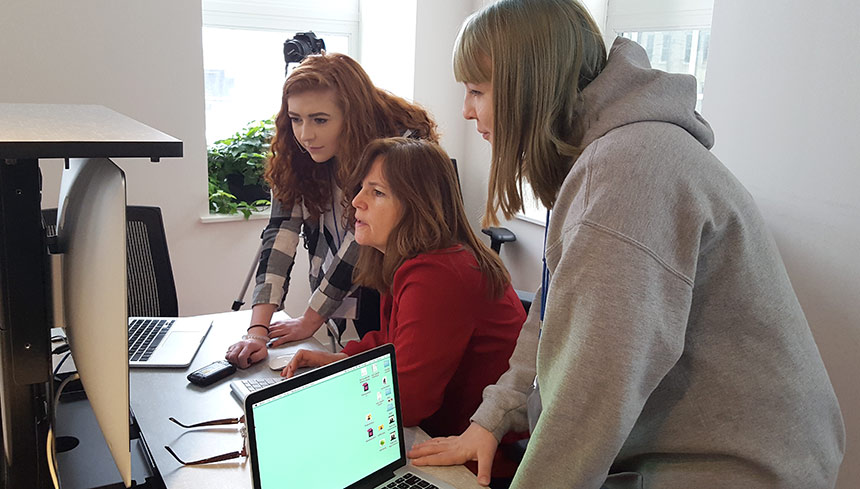Make no mistake. It's not the so-called vocational education track of days gone by. It's relevant, hands-on 21st century programming that boasts an average 93 percent graduation rate, according to the U.S. Department of Education.
Here in New York, CTE has many faces. Among them: high-flying aviation programs in the Hudson Valley and on Long Island; construction trades career study at Jefferson/Lewis BOCES; a popular forensic crime scene investigation program at Eastern Suffolk BOCES; and a specialized Erie 1 BOCES program for students interested in pursuing a career in dental lab technology, dentistry, dental hygiene and dental assisting.
"If policymakers are serious about improving graduation rates and preparing students for college and careers, CTE must be a high priority," said NYSUT Vice President Catalina Fortino. "It's what many students need — and want."
For many students, the hands-on, real-life approach is more engaging — and a better fit.
That's certainly the case for Tori Savacool, a student in a two-year media marketing communications program at Onondaga-Cortland-Madison BOCES.
The new program, which offers rigorous high school and college-level study in a real-world business setting, allows students to work alongside WCNY public media staff on projects across TV, radio, social media, web and print platforms.
At a WCNY event where students discussed how the CTE educational program has changed their lives, Savacool described herself as a student who tried to hide in the back of the classroom at high school, never talking to anyone or joining groups, like a sports team. She said the small class and hands-on experience boosted her confidence. Next year, she plans to study film at Ithaca College.
"I realized I didn't have to wear a jersey to be part of a team," she said of the class, "and that's really special to me."

OCM BOCES teacher Kathleen Labulis (pictured above, with students) said Onondaga Community College instructors come in two days a week and students at WCNY can earn up to 21 college credits in courses like English, public speaking and media communications. OCM has recently started two other programs embedded in local industry: a physical therapy program at a local sports center and an auto technology program at a local car repair shop.
"I think that as word gets around to students — and parents — that CTE programs are engaging and prepare students for college and careers, they will become even more popular," Labulis said. "There are a lot of misconceptions about CTE."
NYSUT has long made the case for expanding and promoting CTE. Following a 2014 NYSUT white paper prepared by a workgroup of CTE practitioners, the Regents approved a new CTE graduation pathway, starting last June, that allows students to substitute one CTE exam in place of a Regents exam for high school graduation.
Though the Regents recommended $65 million to support expansion of CTE, the governor's budget proposal earmarks only $4 million.
Union leaders are urging state legislators to put some money behind the CTE initiative. In testimony before lawmakers preparing the 2016–17 state budget, NYSUT Executive Vice President Andy Pallotta urged lawmakers to improve the reimbursement structures to encourage more districts to send their students to regional BOCES and Big Five City school programs.
United Federation of Teachers President Michael Mulgrew, who taught at a CTE high school, spoke from experience:
"I can tell you firsthand how these CTE career pathways allow teachers to engage students in ways that traditional classrooms might not be able to. This keeps our students in school and puts them on a promising career path."